By Craig Stockwell
Now that October’s in the rear view mirror, Veterans’ Day will be here soon. Veterans’ Day was originally meant to honor the veterans of the First World War, although today, all men and women who served our nation can take pride on November 11. The First World War and its aftermath was the most catastrophic calamity in human history to that point and I doubt that 21st century people can fathom what life must’ve been like for the men in the trenches. But a number of the rifles they used in the day are timeless and worth a look back . . . .
Today, the average soldier around the world carries a select fire rifle in some 5mm caliber with a detachable 30 round magazine (more or less) and bolt action rifles are relegated to snipers. Designated marksmen typically carry semi-automatic or altered select fire rifles like the SVD or the M21 and M25. Ninety-five years ago, though, soldiers carried much different equipment; bolt action rifles with non-detachable magazines and as many clips as they could stand.
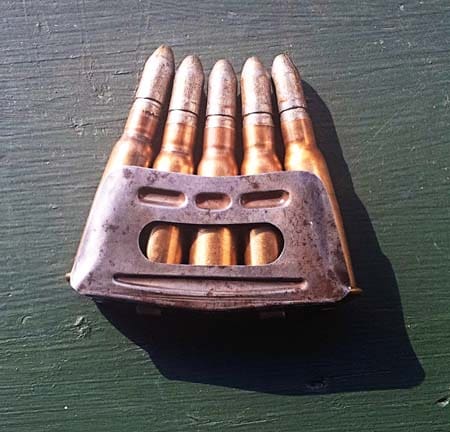
Also, countries tended to design their own calibers rather than having an accepted international standard. America had .30-06, Russia had 7.62x54r, Germany used 7.92×57, Britain liked .303, France had 8x50r (also known as 8mm Lebel rifle), the Ottomans shot 7.65×53, and Italy, Sweden, and Japan all preferred 6.5 caliber rifles.
None of these countries’ calibers were interchangeable; there was no such thing as a PMAG; countries couldn’t even settle on a common bore diameter. Think about in terms of today’s militaries. Every major military power uses either 5.56×45 NATO, 5.45×39, the Chinese 5.8×42 or the 5.7×28 “personal defense” cartridge. Even pistol calibers are standardized with both NATO and the Russians fielding service pistols in 9×19.

I had the opportunity recently to sho0t a 1913 Enfield SMLE, a 1917 St. Etienne Berthier M1916, and – a slightly younger 1940 Kokura Type 38 Arisaka. They belong to a collector from New Hampshire who I met via the Surplus Rifle Forum and they make up his “World War One Selection.”
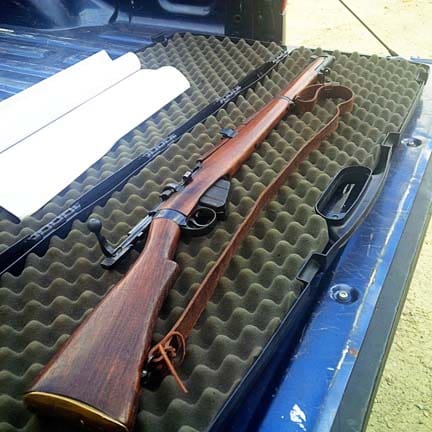
The Short Magazine Lee Enfield rifle was the standard service rifle for British and most Commonwealth forces from about 1904 up to and well beyond 1939 (the British changed over to the No. 4 MkI Lee Enfield in 1939, Australia kept the SMLE until the adoption of the L1A1).

The Berthier M16 was technically a stopgap; the French “official” rifle at the time was the M1886/93, and the Berthier was adopted initially as a cavalry carbine. In 1915, and again in 1916, the carbine was enlarged into a full rifle. The Berthier series of rifles served in the French military officially from 1890 to about the 1950s (for colonial troops and the Foreign Legion), and by the French police into the 1980s.
The Arisaka Type 38 was adopted in the 39th year of the reign of Emperor Meiji. That’s 1905 on our calendars. It was officially replaced in Japanese service by the Type 99 in about 1939, but the Japanese could never fully replace the T38s, so the two served together (like the Berthier and the Lebel).
Two of these rifles, the SMLE and the Arisaka T38, are cock-on-closing designs. The action becomes stiffer and harder to close after the cartridge is chambered and the user is trying to push the bolt handle down. These rifles require a little more practiced technique to throw the bolt, however they’re extremely fast to open and close once the user knows what to do. The Berthier is cock-on-opening, similar to a Mauser, a Mosin, a Savage, and every other modern bolt action gun.
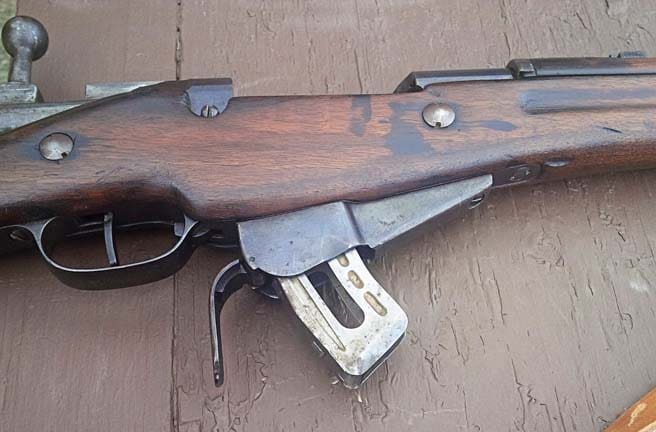
The SMLE and the Arisaka use stripper clips, and the Berthier uses en bloc clips, similar to the Carcano and (to a much lesser extent) M1 Garand. The Berthier M16 and the Arisaka are 5-shot, and the SMLE is 10-shot. The stripper clips of the SMLE and Arisaka must be removed out of the receiver manually or by throwing the bolt, and the Berthier’s en bloc clips eject out of the bottom of the magazine via the floorplate. The SMLE’s detachable magazine is not for reloading, it’s for cleaning. Instead unscrewing the magazine to release it, the magazine release lever is on the top of the trigger guard and the magazine was only dropped for cleaning.
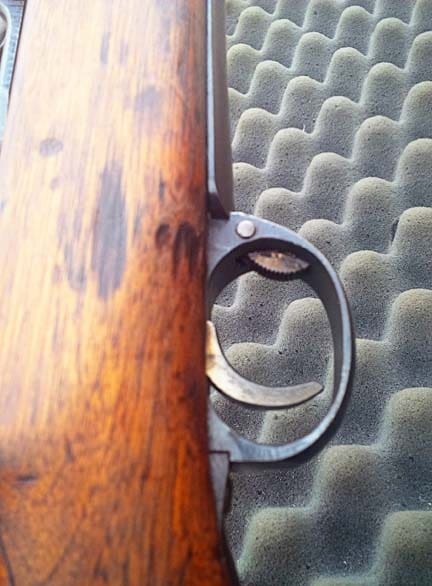
Speaking of trigger guards and floorplates, the T38 has a button on the inside front of the trigger guard that rapidly ejects the floorplate, spring, and follower out of the bottom of the magazine. I was curious as to if anyone was killed because they accidentally hit that button and their entire magazine plus ammo flew onto the ground.
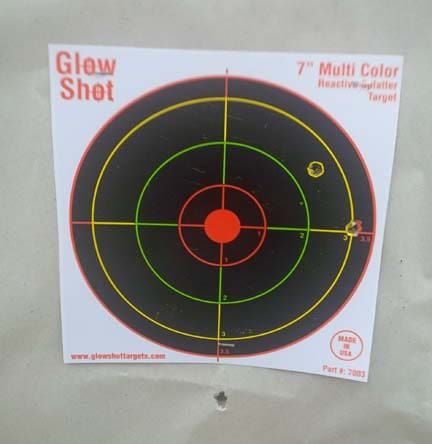
We shot about 35 shots out of each rifle, 20 at 100 yards, 10 at 200 yards, and 5 at water jugs 50 yards away. Truth be told, these rifles are not exceptionally accurate. They can maintain about 3 to 5 MOA at 100 and 200 yards. However, I believe that the ammo had something to do with it. We were shooting 200 grain cast bullets with gas checks traveling at about 1400 fps out of the Berthier, whereas original French ammo was about 2200 or 2300 fps. The SMLE was fed a mix of reloaded soft points, FMJ reloads (some with 7.62x54r silver tip bullets), and South African surplus.
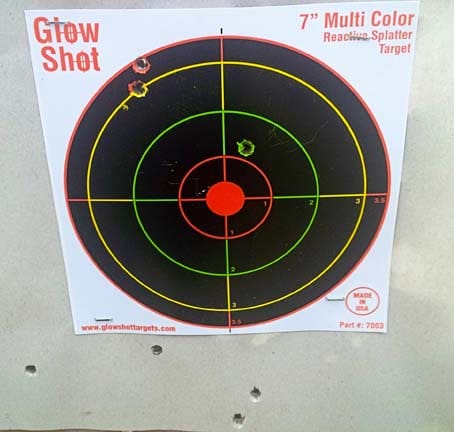
The Arisaka was shooting reloads with Hornady A-Max bullets. One of the main issues I had with all of the rifles was their sights. The SMLE has a minute blade front sight, the Berthier has a fat (1/4” to 1/2” maybe) blade with a tiny notch in the middle, and the Arisaka had a triangular front sight. The rear sights on each rifle were U notch for the SMLE, partridge for the Berthier and V notch for the Arisaka.
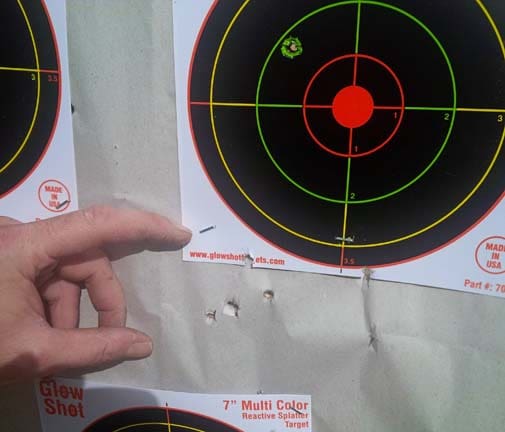
In the trigger competition, the Berthier wins hands down. It was a long, two-stage trigger, however the second stage was light enough so I didn’t know exactly when the trigger would break (if we go on the “triggers should be like surprises” theory). The SMLE’s trigger was lighter. In fact the owner thought the trigger was excessively light because the wood of the stock had expanded too much and was throwing it off. The Arisaka’s trigger was also a two-stage design. Initial creep was minimal and the second stage was about six pounds.
Given their size, even with the large rounds they shoot, none of the guns’ recoil presented a problem. All of them are much softer on the shoulder than the faster cartridges of that era, such as .30-06 or 7.62x54r. The Berthier was the best all-round handling rifle by a long shot. Its stock fit me nicely, whereas the SMLE was very uncomfortable and the Arisaka was OK.
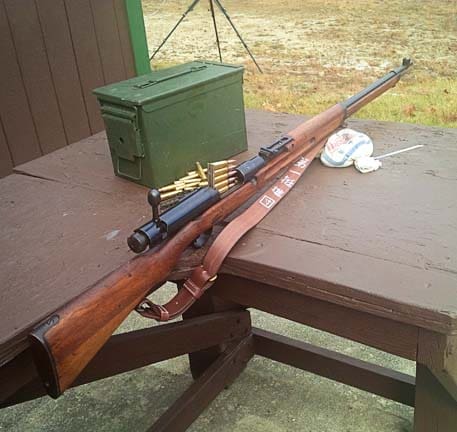
These rifles are great collectibles. They aren’t guns you’re going to take out every weekend, simply because of the price and availability of ammo. Neither my new friend nor I could find any factory ammo for the Berthier, and we’re in two different states. Arisaka 6.5 runs about $30 and up for a box and .303 is between $20 and $30 depending on the manufacturer. None of these calibers are cheap, and there are very few companies that produce ammo in these calibers any more with the possible exception of .303. If you want an old rifle to shoot and you don’t reload, I’d suggest a Mosin, an M1903 Springfield, or a P17 Enfield. While 7.92×57 Mausers have a larger ammo supply the surplus for that caliber has effectively dried up in recent years.
If you reload, then you’ve got no problems…as long as you’ve got the cash. Personally, if I were to buy one of these guns it would be the Berthier. It’s got a smooth-but-not-fast action and the trigger is crisp but not too light. It’s also the best looking out of the bunch. It has its limitations, though, such as a lack of ammo and sights that are inadequate for precise target shooting. Lining up and putting the front sight over a feldgrau coat at 100 yards is another story.
These rifles are living, shooting, real history. It’s a great experience to shoot rifles of this vintage, especially since every veteran of the First World War has now met the Spirit in the Sky. We can’t talk to the men who shot these rifles, but we can still hear the rifles’ voices. They still work, they’re still tough and they’ll get the job done.

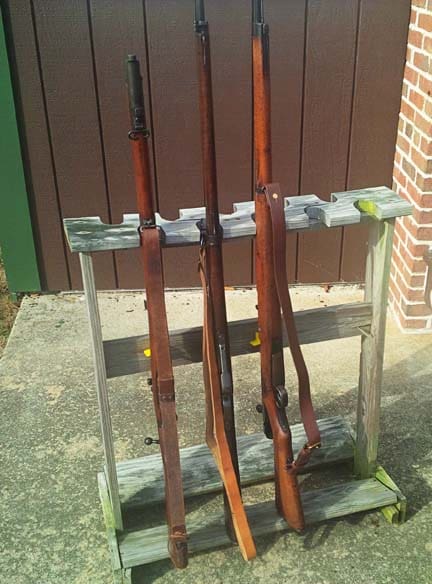
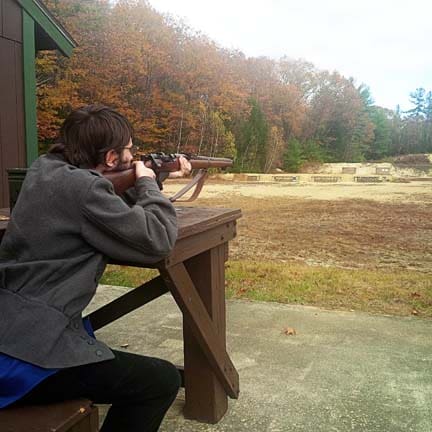



Good article, how about a Gew88 Commission Rifle review? I owned one and it had the smoothest action ever, just weighed a ton. Picked up a KAR88 (carbine version) last year rebarreled to .257 Roberts and done in a “Guild Gun” style. On a side note these popup ads are making this site hard to navigate.
AdBlock fixes that problem.
I would’ve loved a G88, I just couldn’t find someone that owned one. As of today, my only C&R gun is my M91/30.
I love my Gew98. It attracts attention on the firing line when I mount the bayonet. The action is butter smooth and all that weight absorbs all the recoil and it Busts milk jugs at 300m.
I agree the 88 would be a good one for an article, very nice trigger and the barrel jacket is a really unique idea.
I’ve always loved milsurp rifles and have been slowly expanding my collection. I want a Enfield in the future because they are a nice gun. So far all of my rifles are WW2 era. My 1903A3 is an awesome rifle and very nice to shoot. It forces me to slow down my shooting a little more than when I fire my Garand. The biggest draw for me is the history. Who knows where these rifles have been and who carried them.
If you want to buy one, let an admin know and they will give you my email. I have a nice one from Sept. 1917 that is a good shooter.
303 is 15 bucks a box if you go with privi
Not in New England 😉
I know MA is a no-go but i wasn’t sure about the rest of “frost country”, remington green box is over a dollar a holler but the cheapest otherwise (at bass pro)
Love milsurp, especially the main battle rifles of WW2. Comparing rifles of the two periods, it’s clear that even in the economically-stressed period between the wars, advances were being made in small arms design and manufacture.
Living history indeed!
Most countries entered WWII with the same main battle rifle they had in WWI. Except the US. The Garand was a huge advantage in firepower with no practical loss in accuracy. Carbines and SMGs were around but most troops carried long and heavy bolt actions.
Blammo, it wasn’t just the US. Germany switched to the K98k, which was a carbine version of the Gew. 98. Under the Treaty of Versailles, Germany was prohibited from equipping its small army with full size rifles. The Allies didn’t know that they were doing Germany a favor.
Japan switched to the Arisaka Type 99, but it couldn’t make enough of them. Keep in mind that Japan invaded Manchuria in 1931, so Japan did not have a full “interwar period” to get its new weaponry in order.
Russia tried to switch to the Tokarev and actually made about 1.5 million of those self-loading rifles with detachable magazines, but once Germany invaded, all bets were off. The Russkies could make ten 91/30s in the same time it took to make one Tokarev.
And the Russians could make 3 sub guns for every 91/30 they made. As far as I know they’re the only country in that war that fielded whole battalions armed with sub guns.
I prefer Non-Main Battle Rifles and because they were never used on the front lines they are very Minty and there are loads of ammo for them.
(Sarc Off)
I like how you can see how intelligent at the time the common soldier of some of these countries were based on the design of their rifles. Japanese Arisakas were incredibly easy to take apart for cleaning probably because most of the soldiers probably didn’t grow up with much of an education back then.
My uncle told me stories from Okinawa or Guam of the Japanese survivors (after the battle was declared over) coming out at night and covering bulldozers and such with branches, as if to hide them. They figured the soldiers knew so little about motors and power equipment that they didn’t think how effective dirt in the fuel tank would be, or ripping off wires or breaking hydraulic lines. He said it was kind of sad in a way, thinking how they were just ignorant peasants thrown into a war about which they probably knew nothing.
He also had a funny story about some Lt sitting in an outhouse when the door burst open and there stood a fully armed Japanese soldier who wanted to surrender.
well done! i really like these kind of articles that compare weapons that were used in warfare by opposing forces. More Please!!
Actually, these guns were all on the “Allied” side for WW1. Japan was on the same side as the Brits, the French, and the US.
I’d love to do another article like this, I just need to find the guns 🙂
The Brits couldn’t keep up with rifle production and they bought a batch of Arisakas for issue to the royal navy and as training rifles.
I bought an Enfield #4 for a hundred bucks in usable shape and simply shoot the daylights out of it.
I even shot it in a few “tactical” matches and got big crowds watching. I had trouble sometimes laughing too hard but actually won “most accurate” at an outlaw “IDPA” match of about 90 rounds.
Certainly the most “tactical” of all boltguns, fast to operate and with that huge (by those days’ standards) magazine, a load-and-shoot-all-day gun.
Maybe cock-on-close is a problem for a hunting gun, but not a battle rifle.
The guy on the battlefield full of boltguns with the Enfield was way ahead of his adversaries in terms of speed and ability to inflict damage.
Now, if only I could keep myself from unloading 100-200 rounds every time I take it to the range…
Im still pissed off that my dad sold 2 Ariska 38s rifles he brought home at a yard sale back in the 80s. For $25 each.
Along with a collection of 30 daggers, bayonets, both German and Japanese dress swords to the 1st guy who gave him some cash, $1000 in the early 2000s.
Darned stupid of him.
At least I still have the early issue Sauer & Sohn H38 with all the bells and whistles.
That I took when he wasn’t looking.
I collect and shoot WWII rifles. I love my M1, but there is nothing like defending the Rodina from Nazi zombies at the range.
I have an Arisaka Type 38 with intact mum (NOT a “last-ditch” model), and it’s a great shooter. The one time I ordered a few boxes of Hornady 6.5, it shot some pretty good groups out to 100yd and had a very gentle recoil.
Unfortunately, the man who brought it back from the Phillippines (my dad’s friend’s father) chopped the stock up and made a hunting rifle out of it. I’d like to get a repro stock, but the few times I’ve seen them they’ve cost a fortune.
Too bad we made Japan dump all of their surplus ammo into the sea.
I’ve had my SMLE #4 Mk2 for over 15 years. It has a lot of kick compared to my AR, but is still fun to shoot. My adult son is a big fan of well.
I have a SMLE and a Webley Mark VI. Both are among my favorite historical guns, relics from the era of great British engineering. The Webley is more a cool curiosity (not least because .455 is more expensive than .303), but the Smelly is, as far as I’m concerned, the best bolt-action battle rifle ever devised.
If you’re in the Northeast, please get in touch with TTAG. I want to do a Easter Rising article for Easter 2014, and a Webley MkVI would be great to feature.
[email protected]
You’ve got mail.
A Lee-Enfield is not comfortable to shoot off the bench. But if you use one in a real-world position (standing, sitting, kneeling, prone), you will be surprised how quick they align to the target. They are a shooting rifle. A workhorse. Not a showpony.
No Moison-Nagant, now I’m depressed. Is gun, is shoot.
They aren’t precision target rifles. Don’t expect that of them. They were mostly made for conscript peasants of little to no formal education. Reliability under adverse conditions and extreme weather were more important than precise accuracy. They’re accurate enough for their job. And tough enough that we still shoot them 100 years later with little more than routine cleaning for maintenanace.
Check back in a 100 years and see how many plastic fantastics are going with just routine cleanings and few if any parts replaced.
Cock-on-close is great fr accuracy and rapid fire because you lose the gun wiggle when opening the bolt, and you lose the gun wiggle when ramming the bolt forward because the spring compression absorbs the shock.
I have a type 99 and the bolt has only 5 parts. You can disassemble it, slosh it around in a stream, and reassemble in 10 seconds or so.
The type 99 also has a triangular front sight, which put me off at first, but I discovered that in low light conditions where a blade disappears against the background, my eye instinctively knew where the tip was. Now I consider it one of my favorites. I think the Swiss K31 has a triangular front sight too, but I’d have to check the safe to be sure.
I’ll add a few thoughts…
Prvi sells factory ammo but they do it in batches so if you miss your window you’re out of luck. Something to look for is that the French changed the ammo in the 1930s, if your gun was converted there should be an “N” marking.
The pre-war Berthiers used a 3 round en bloc, the 5 round en bloc and the metal piece that sticks down past the stock were a late war change. If you look at the sights on some of the guns made during the war you’ll see little holes exactly like nights sights today, which is because that’s what they were. The French soldiers would use a radium based paint or paste of some kind that glows (radium is radioactive). I think they were the first night sights, I could be wrong on that though.
Remington made a lot of Berthiers on contract. The French rejected the whole contract and Remington about went under because they were stuck with all these Berthiers (and also Mosins). The US army bought them and most ended up on the surplus market here in the US. They’re a fun gun; watch a youtube video before trying to take the bolt apart.
I shouldn’t write my own article here, but I’ll also add that the pre-war Enfields had a magazine cutoff like the Springfield 03 for instance. You load a round in at a time and save the rest of the magazine for an emergency. That idea didn’t survive into the war, and most don’t have the cutoff anymore.
The SMLE I shot for this review did have the mag cutoff, but I decided to not write about it just to save on the readers’ eyes. When I’m at the range and I want to shoot a rifle single shot, I would just shoot it single shot with an empty mag. For all intents and purposes, its a useless feature in the 21st Century unless you’re a collector and you specifically want a rifle with the cutoff.
My 03 springfield had the magazine cut off lever on the left side of the action. It’s a feature the US added in the earlier rifles that wasn’t found on the 98 mauser that the springfield was mostly a copy of.
I have a Canadian Ross Mk III (1910) .303 that is fun to shoot, and surprising accurate. It originally equipped Canadian troops in WW1 until it was replaced in 1916. It loads from 5 round stripper clips.
The straight pull design is very fast to cycle, but it takes some “getting used to” forcing the bolt home on a loaded round.
I read anecdotes about the improperly re-assembled bolts firing without locking, resulting is horrendous injuries to the shooter, so I am EXTREMELY careful when reassembling it after a thorough cleaning.
Many Canadian units used this model Ross as a sniper rifle due to its outstanding accuracy.
Some (very few) of the Ross rifles were converted in 1916 into .303 light machine guns, the Huot Automatic Rifle, which took a 25 round drum.
More details on the Ross:
https://en.wikipedia.org/wiki/Ross_rifle
Comments are closed.